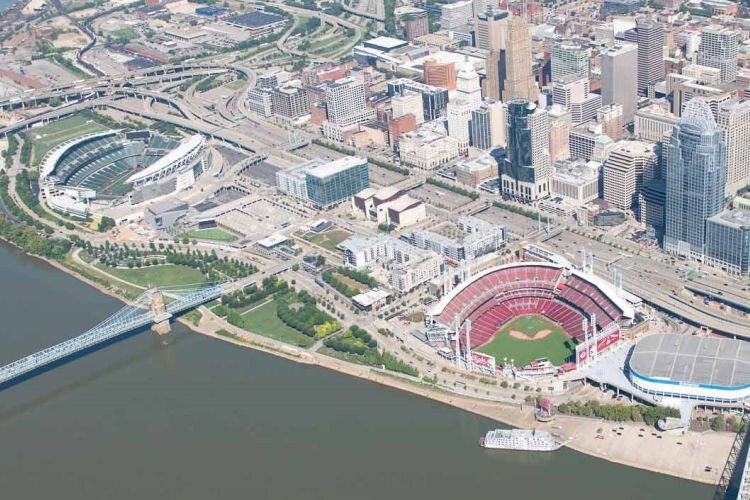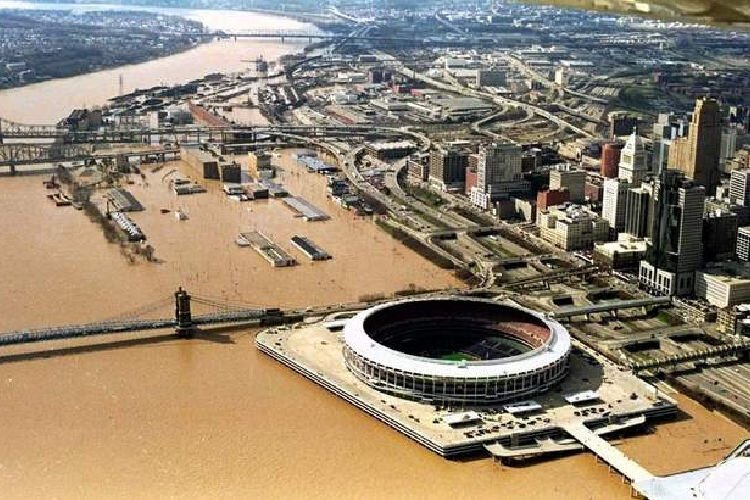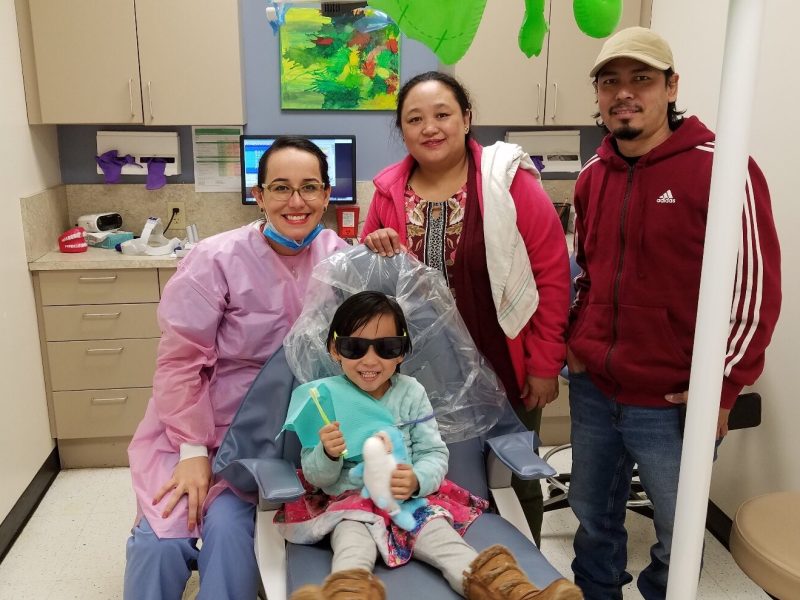Partner Partner Content What makes a great place?
No matter the scale, we intuitively know when a place is great, even if we don’t fully understand why.
Close your eyes. Think about your favorite place and how you feel when you’re there. “Place” is a broad word; it could mean a single room, a building, a park, a block, even a city or country. No matter the scale, we intuitively know when a place is great, even if we don’t fully understand why. Although there isn’t an objective checklist or formula that results in greatness, there are some broad concepts that can help identify why some places are just better than others.
If walls could talk.
“The most important thing is the story connected to a place or space,” said Kurt Platte, AIA of Platte Architecture + Design. “If there is not a story then there’s usually a lack of potency to that space.”
When it comes to making a great place, age and history aren’t a requirement for having a good story, but they can help. New construction – whether a single building, a development, or a community – needs to have a clear mission to create that story.
“The Banks is the natural gateway to Cincinnati,” said Phil Beck, AIA with Hamilton County. “In 1996 the Riverfront Advisory Group put forward a concept of what could happen on the riverfront. Replacing existing surface parking and warehouses with two new stadiums to serve as bookends for a new mixed-use development that included residential, office, hotel, and retail, with a riverfront park.”
How do projects get from a vision or a story to a physical place? Through a lot of talking, listening, drawing, and revising.
“We like to over-meet with people at the beginning of a project,” said Christina Willis, AIA of emersion DESIGN. “We need to hear from all the user groups to understand their goals, objectives, and missions, as well as how they want to use the space.”
Architects and the design team consider all the perspectives on a project, even those that diverge, and look for commonalities that help them craft a design solution.
“All our projects are thematic in nature,” said Bruce Robinson, AIA with BDR Design Group. “Our approach considers all the assets, opportunities, and challenges related to what the experience of the users will be, then all the design features – from the masterplan to the architecture, finishes, and wayfinding – direct us to that goal.”

People make places
Architects and planners can design a place to function in specific ways, but that doesn’t mean people will use it as intended. If you’ve spent any time walking around a campus, park, or town, you’ve seen, and probably used, desire lines. These are the paths pedestrians make between thoughtfully laid out sidewalks or “official” routes. They’re the more convenient routes that the users of the place prefer. Sure, by taking a shortcut maybe they’ll miss the way the designer planned for the destination to dramatically emerge into view, but they got there faster.
Even before a place is built, people contribute to the process. In addition to the client/owner, there are other stakeholders, including neighbors and users, who may need to have input into a project. Their contributions help shape the look and feel of the place.
“If you really want an amazing piece of art, make sure you include everybody, even the greatest opponent of the project,” said Platte. “It’s imperative in creating a great place to embrace and leverage all contributions to the process.”
Places that are designed to serve a variety of users and provide multiple uses may succeed because of the different ways people can engage with the space and the increased level of activity. This is especially important in urban settings. When people go to a forest to hike or take a scenic byway, part of their motivation may be being alone with nature. In cities, underutilized places may feel isolated and unsafe. When a space is animated with programming, it may feel more comfortable and draw people to engage.
“Smale Riverfront Park serves many audiences; people staying at a nearby hotel, Downtown residents out for a jog, suburban families in for dinner or a game,” said Beck. “There is a diversity of use including a playground, the carousel, a labyrinth, farmers market, memorials, and the Go Vibrantscape where you exercise without realizing it.”
Whether it’s a home or a hospital, a park or a public library, the way people use and change the space – the residents, employees, and visitors – influences how a place feels. The level of activity and light, the type of decorations and furnishing, can change an ok place into a great one.
Getting all the feels.
Americans spend approximately 90% of their time indoors. Think about that. We’re inside for over 21 hours a day. Of the 365 days in a year, we spend 328 of them inside. We’ll spend 70 years of our average 78-year life expectancy inside. That’s kind of insane. And it means the spaces and places where we spend our time need to be good for us. They need to be inviting, safe, and sometimes amazing.
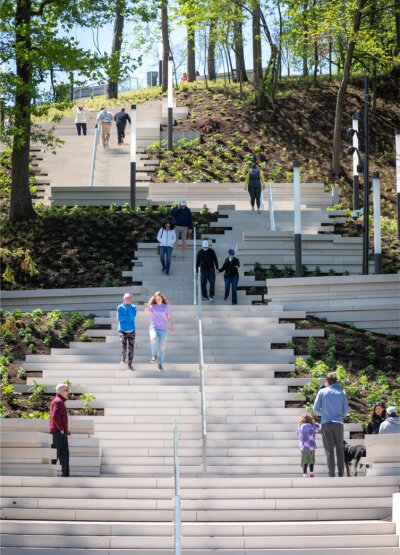
“Places provoke feelings and emotions,” says Willis. “We define great places as being inspirational or transformational to the user. They may be comfortable or make you stop and think.”
Architecture is an art and so is highly subjective. In the same way people may prefer realism, impressionism, or contemporary art, architectural styles will resonate differently; the same people who love the Gothic influences of Washington National Cathedral might not embrace the modernism of North Christian Church in Columbus, Indiana. And that’s ok.
Our familiarity with the type of building also impacts our experience of it. We have certain expectations of libraries, schools, houses, offices, etc. We know what they “should” look like. We think we know what to do when we enter. But as our culture changes, architecture continues to evolve. Banks are no longer temple-like structures with a great hall lined with tellers. Now, they’re often accessed as a drive-through in a strip mall or a centrally located coffee bar with DIY banking options. Great places adapt to or reflect these social changes and help people adjust through clear design.
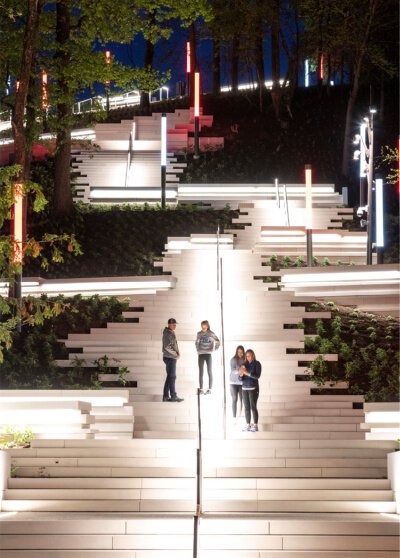
“People don’t always want to learn from the experience they’re having, they want to enjoy it, so it’s important to make it easy for the user,” said Robinson. “When they walk in, the environment should feel natural to them. They should know what to do next. While we design for happy surprises, finding your way shouldn’t be one of them.”
There’s no place like home.
People have little to no control of our built environment. Towns and cities evolve over time, accumulating the buildings of generations of inhabitants. We might choose our employer, but not necessarily the office building where we work. We decide where we want to live, but few people have their homes designed and built just for them. We have even less influence over shared public spaces. If you’ve ever felt trapped by the floorplan of an IKEA, unable to find the shortcut from kitchen accessories to furniture, that discomfort and frustration impacts your appreciation of the space.
“Giving people control is an element of a great place,” said Willis. “To feel safe and comfortable, people need to have some control over their visual and auditory experience – being able to see someone approaching, designing lighting for daytime and nighttime use, and providing clear circulation paths.”
Our homes may be the place where we have the most control. Even apartment dwellers get to adjust the lighting and temperature, choose their furniture, and decide what to hang on the wall. Where we live, like other places, tell stories.
“Our residences are also thematic,” said Robinson. “What’s the image of where you want to live? It’s where you retire to at the end of the day. It’s where you want to relax and get away from it all.”
In choosing a place to live, we look at the neighborhood and the style of our housing options and select the place where we feel good, and that we can afford. Consider Mariemont and Greenhills, two greater Cincinnati planned communities built within 20 years of each other, but with dramatically different senses of place.
Mariemont seeks to recreate the feeling of an English village with a village green, Tudor style architecture, and winding roads. Greenhills also has winding roads and a village green, but it’s better known for the International Style design of its residences. There are some Colonial Revival buildings too, to make this built-from-scratch neighborhood feel like it evolved over time.
Context is everything.
Most towns and neighborhoods are not so architecturally consistent since they actually did develop over decades or centuries; the Mid-Century Modern gas station might be across from the Federal style courthouse and next to a Queen Anne department store. A residential street may have a contemporary house next to a Spanish Revival and across the street from a Colonial Revival, with an Art Deco mixed use building on the corner.
“The context is so profoundly rich with texture and storytelling,” said Platte. “Sometimes you get to work with a space, building, alley, or view that makes it nearly impossible to screw up. But if you don’t have context then the new space – the architecture, the color, the texture, the artistry of it – must be even stronger.”
Our built environment is a pretty durable thing; well-built buildings may stand for hundreds of years and influence the lives of generations of people. As we construct new spaces, adding to the context of the places where we live and work, it’s essential to consider both the current and future of the place.
“When Fort Washington Way was built, the design included piles that would allow it to be decked over,” said Beck. “Even though that project wasn’t going to happen right away, they were thinking ahead and giving us a shovel-ready project that could totally change the dynamic of both Second Street and Third Street.”
Ongoing developments like The Banks and new projects including infill residential in Over-the-Rhine and other historic districts, mixed-use developments in Pleasant Ridge, Madisonville, and Clifton Heights, and major infrastructure projects like the Western Hills Viaduct, Brent Spence Bridge, and future Fort Washington Way decks, are opportunities to make great places for our communities. The challenge is to consider how these places can be great not just for today, but for the generations of residents and visitors who will be living, working, and playing here in the future.
The series, Architecture Matters, is supported by AIA Cincinnati. Learn more at aiacincinnati.org.
The views expressed herein do not necessarily represent those of the American Institute of Architects or the members of AIA Cincinnati.


